Microsoft BUILD: Windows 8, A Pre-Beta Preview
by Brian Klug & Ryan Smith on September 13, 2011 12:05 PM EST- Posted in
- BUILD
- Windows
- Microsoft
- Windows 8
- Trade Shows
Mobile Experience Side
Coming from the smartphone side of things, I really see many shades of WP7 inside Windows 8. That’s actually dramatically understating the state of things - the core of what we’ve been shown of Windows 8 that’s new literally is either adopted from or directly analogous to much of WP7.
It doesn’t come as a surprise to me at all that the desktop Windows experience is moving in this direction, (and it seems as though the Xbox 360 interface will follow shortly). The positive result is that Windows 8’s touch experience feels much closer to the ground-up approach Android Honeycomb or iOS have taken than the than the “Tablet-Edition” versions of Windows XP and the tablet integration in Vista and 7. I used a UMPC and remember Origami and how that application lived as its own standalone mode of operation as an application within windows. What Windows 8 is the inverse - Windows now lives inside a Metro-themed Start screen that looks like WP7 for the desktop. Or at least it does in this demo we’ve been shown currently.
The tablet experience is now absolutely on par with modern mobile OSes - sure there are a few more things that need to be included, but the foundation is there for Windows to suddenly become more than an OS that also can do touch-based interaction.
IE 10
Microsoft has been actively promoting IE 10 since MIX 11, with two platform previews so far, and IE 10 is an integral part of Windows 8 both as a browser and as a runtime for HTML based Metro applications. We won’t go into exacting detail about what’s new and interesting inside IE10, beyond mentioning that it improves upon IE 9’s GPU acceleration and improves web compliance support including CSS3. What’s relevant in Windows 8 is that IE 10 gets two views - one belonging to the Metro-heavy start menu experience, which we’ll call the mobile view, and the other belonging to the traditional desktop windows view.
This dichotomy exists between the two IE10 experiences, which is in itself a bit curious. The mobile view is almost exactly what IE looks like inside Windows Phone 7.5 - at the bottom is the URL bar and controls, and with a slide down gesture, at the top are tabs. Meanwhile the IE10 desktop experience uses the older IE 9 UI. At this point, it doesn’t appear that windows opened in one are transportable to the other.
The mobile view is almost exactly like WP7.5’s however, the URL bar disappears when scrolling, and the browser supports a completely fluid multitouch experience that feels speedy.
Cloud
Windows 8 offers considerable integration with Windows Live and SkyDrive. Local user accounts can be directly tied to a Live account on trusted PCs, and then be used for live roaming. Live roaming enables each connected device to access the same set of accounts for photos, email, calendar, and contacts and speed up initial setup. For example, photos captured on a WP7.5 device’s camera roll can be immediately visible on a Windows 8 PC authenticated against the same Live account. This is very close to how camera roll will integrate into Apple’s iCloud and synchronize across iOS and OS X Lion.
One thing is clear, and it’s that Microsoft plans to heavily integrate and leverage its Live services into Windows 8 and provide an ecosystem-wide way to migrate accounts settings, photos, and data between mobile, tablet, and desktop.
Samsung’s Reference Tablet
We’ve been loaned Samsung tablets running the Windows 8 Evaluation copy used for this article, and thought it bears going over since the device will no doubt become a reference platform for Windows 8 development. This hardware is also being given away to developers in attendance at BUILD as well.
The Samsung tablet is none other than the 700T model announced at IFA very recently, and it packs a relatively impressive spec list.
| Samsung 700T Windows 8 Development Notebook/Slate - Specifications | |
| Processor |
Intel Core i5-2467M (2x1.6GHz + HT, 32nm, 3MB L3, 2.3GHz Turbo, 17W) |
| Chipset | Intel 6 series |
| Memory | 4 GB DDR3 1333MHz RAM (1 SODIMM) |
| Graphics | Intel HD 3000 |
| Display | 11.6" Super PLS (1366x768) |
| Hard Drive | 64 GB Samsung SSD |
| Networking | 802.11n WiFi + Gigabit Ethernet + GSM/WCDMA HSPA+ |
| Sensors | NFC, Magenetometer, Accelerometer, GPS, ALS, Front, Rear Camera |
| Dimensions | 12.9 mm thick, 909 grams |
The 700T includes GSM/WCDMA cellular connectivity courtesy of an Option GTM661W combination cellular modem and WiFi card. The GTM661W uses a Qualcomm MDM6200 baseband, which also provides GPS. There are also sensors such as ambient light, an accelerometer, and the two cameras onboard.
In addition, the 700T includes an active digitizer and capacitive touch display, making it suited for all three interaction modes that Windows 8 will support. The device comes with a dock that doubles as a charging stand, and also replicates full size HDMI, GigE, and a USB 2.0 port on the back. The slate has one USB 2.0 port, a headphone jack, microSD card slot, SIM slot, and a rotation lock button.
Samsung calls the 700T a slate, we've elected to call it a tablet, and the device feels decent if not a bit heavy in the hands. The 700T is also the first 16:9 tablet we've seen, with Android adopting 16:10 and iOS going with 4:3, which makes portrait a bit extreme.


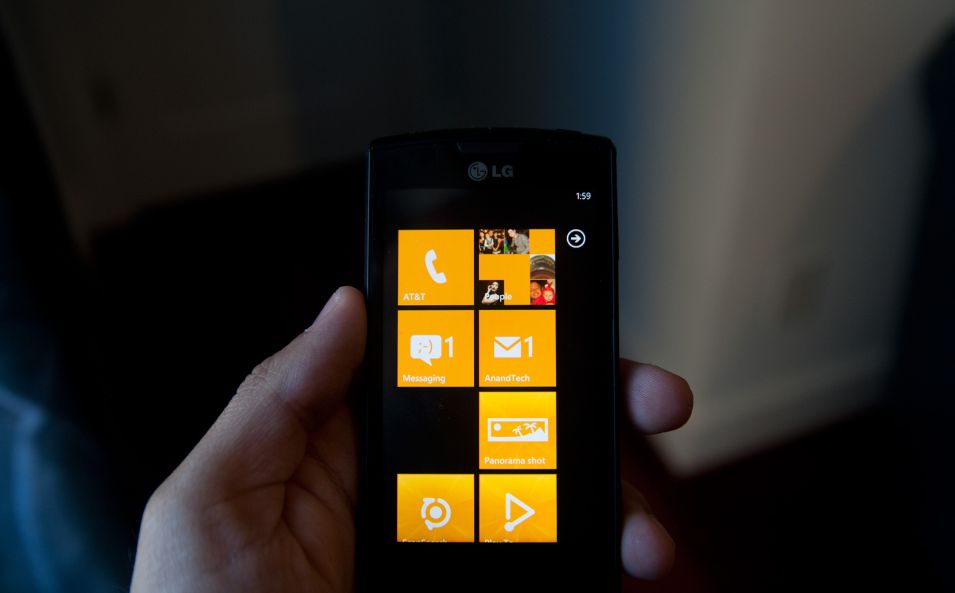
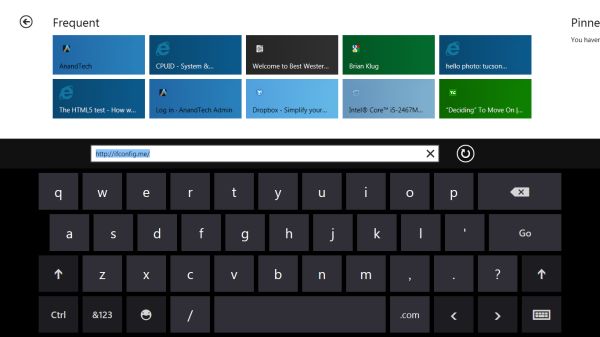
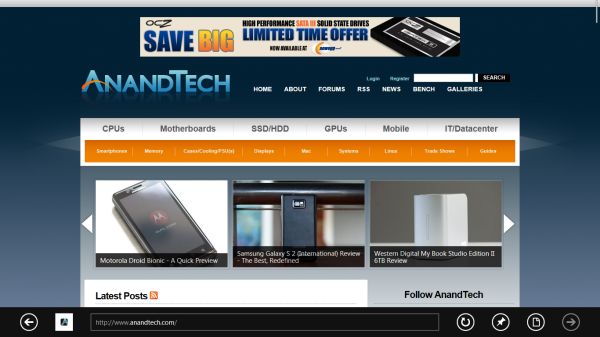
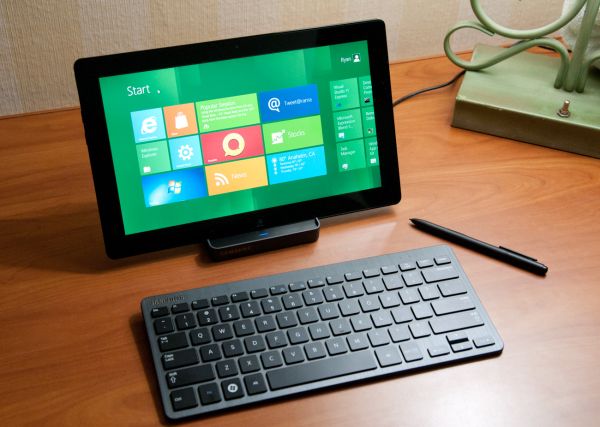
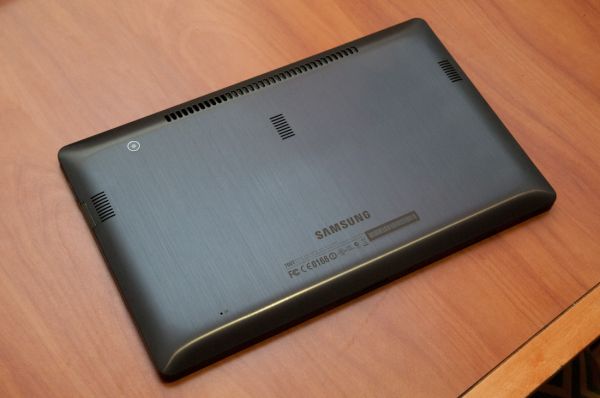
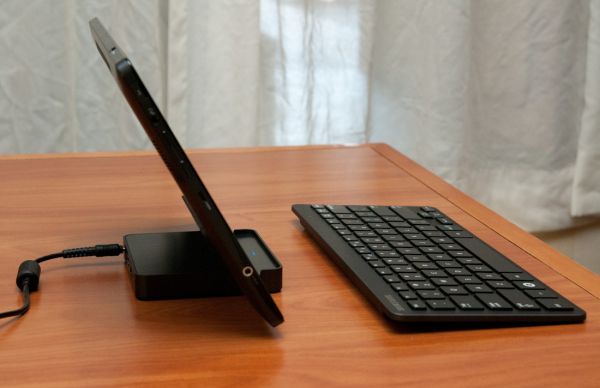








235 Comments
View All Comments
kevith - Friday, September 16, 2011 - link
Read the review, manaugiem - Wednesday, September 14, 2011 - link
I agree. This is an experiment... and one that is doomed to failure. Designers tend to be people of extremes and always push for "change" simply for change's sake. (Because it makes them look good, as if they're thinking outside the box. Contrast is easy to spot.) This is a knee-jerk reaction to the success of iOS. No power user or even business user will accept this because plain and simply it's a huge speedbump to productivity. iOS was so successful because it was targeted at an audience that was only interested in consumption, and even limited consumption at that. Desktops more often than not NOT used in a consumtive manner. (This of all the people sitting at work typing stuff into spreadsheets and running CSR software). This will not fly. It's an attempt to look "modern" by simplifying things for the unwashed masses, but it ain't gonna work. They're going to have to split windows into yet another branch, this time for consumption devices like tablets and media center PC's. This is a joke (and not a funny one) to any power user. Live titles??? Give me a break. Like I said, it's for consumption boxes. Who needs live titles to do your video editing / word processing / data crunching / etc job?futurepastnow - Tuesday, September 13, 2011 - link
Are we, as a society, so stupid and juvenile that we need big colorful buttons for everything? When you use this with a mouse and keyboard, not a touch tablet, you're going to feel stupid.Look! It's a button that's four inches across! I hope I don't miss it with the mouse cursor! *click* Oh, good, I got it. Boy, those little icons Windows 7 had sure were hard to click on.
And I am deeply concerned about my ability to turn this Metro s**t all the way off. Microsoft has stated that you won't be able to use Windows 8 without Metro. Folks saying "just turn it off" don't seem to get it- the Start Menu is *gone* in Windows 8 and this garbage has replaced it. Metro is the shell; it can't be turned off, yet. I think it's probable that MS will backtrack off its idiotic stance of forcing Metro on us, but they may not.
You think people want live icons? Remember the Sidebar? Neither do I. Nobody uses the Dashboard on OSX, either.
BioTurboNick - Tuesday, September 13, 2011 - link
The point is that they aren't just buttons, they are ways to see what is contained within the button or display information. I honestly don't get what's wrong. How often do you keep the start menu open? If everything you do is on the desktop, you'll barely ever see it.UMADBRO - Tuesday, September 13, 2011 - link
I know I rarely ever open mine. I have all the commonly used programs and links pinned to my taskbar. People are gonna piss and moan no matter what. Just ignore them.futurepastnow - Wednesday, September 14, 2011 - link
I don't leave the start menu open. That isn't the point. The point is that the start menu is not fullscreen.All of this Metro crap is fullscreen and it's so integrated into the OS that it can't all be turned off. It's silly fluff for touchscreens, and why should it cover up everything else I'm doing, every other window I have open, whenever the OS decides it needs to go fullscreen?
Fullscreen applications are not progress. They are, in fact, anti-progress, and just because Apple is doing it is no excuse. The olny things that should ever be fullscreen are movies and games and sometimes not even them.
This is not progress.
Ratman6161 - Wednesday, September 14, 2011 - link
As I have said elsewhere, my desktop is always hidden behind the many application windows I have open at any given time. Whatever information the buttons are displaying is irrelevant to me since I will rarely if ever see it.futurepastnow - Wednesday, September 14, 2011 - link
The big colorful buttons aren't going to be underneath all of your open windows. They're not on the desktop at the bottom. They''re going to be ON TOP OF your open windows any time you do anything that invokes the Metro interface- which will be often.Wraith404 - Thursday, September 15, 2011 - link
Not if you turn the garbage off. I feel for developers that waste time creating metro applications for anything but tablets. It's going to be hard disabled on 90% of desktops.futurepastnow - Thursday, September 15, 2011 - link
I'm not sure the average computer mom and pop computer user is going to be proficient enough to turn it off. They're just going to be angry about it, the way they were angry about Vista's aggressive UAC.Not good for Microsoft.